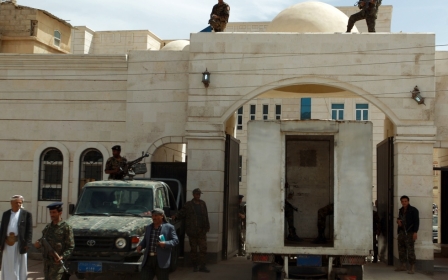AQAP bombmaker suspected dead in Yemen attacks

As reports swirled over who the top targets were of unprecedented coordinated air force and drone strikes by US and Yemeni forces in the country over the weekend, analysts are already warning of a militant and civilian backlash.
London’s The Times reported on Tuesday that the US had also launched a ground operation in the country, adding that tests were underway on bodies recovered from an ambush to determine if Ibrahim al-Asiri, a suspected chief bomb-maker for al-Qaeda in the Arabian Peninsula (AQAP), was among the victims.
Reports vary but it is believed that between 55 and 68 people were killed in air force and drone attacks over the weekend.
Asiri was reportedly the mastermind of the so-called “underwear bomb plot” which saw a young Nigerian man attempt to detonate a device on an aircraft over the US on Christmas Day 2009.
US officials have denied that Asiri or Nasser al-Wuhayshi, the AQAP leader, were the intended intended targets in the strikes.
New MEE newsletter: Jerusalem Dispatch
Sign up to get the latest insights and analysis on Israel-Palestine, alongside Turkey Unpacked and other MEE newsletters
Asiri's killing has been reported previously, although The Times correspondent in Yemen, Iona Craig, noted on Twitter that this incident appeared different to previous claims.
Craig said that militants would be quick to launch retaliation for the strikes.
Meanwhile, some Twitter users were quick to reject the reports of Al-Asiri's death.
Charles Lister, a visiting fellow at the Brookings Doha Centre, told Reuters that civlian deaths as a result of the drone strikes could result in blowback for the US and Yemeni government. "[T]he lack of on-the-ground military presence means a lack of localised intelligence, which by extension means strikes have inevitably struck civilian targets on occasion. In a deeply tribal and conservative society, such incidents are a recipe for disaster," he said.
The weekend attacks follow a major uptick in covert US operations inside Yemen during the first quarter of 2014, according to a report by the MEE's Patrick Galey on Monday. If confirmed, the more than 14 possible drone strikes during the three month period would represent the highest concentration of drone activity in Yemen since May 2012.
Middle East Eye delivers independent and unrivalled coverage and analysis of the Middle East, North Africa and beyond. To learn more about republishing this content and the associated fees, please fill out this form. More about MEE can be found here.



